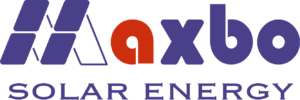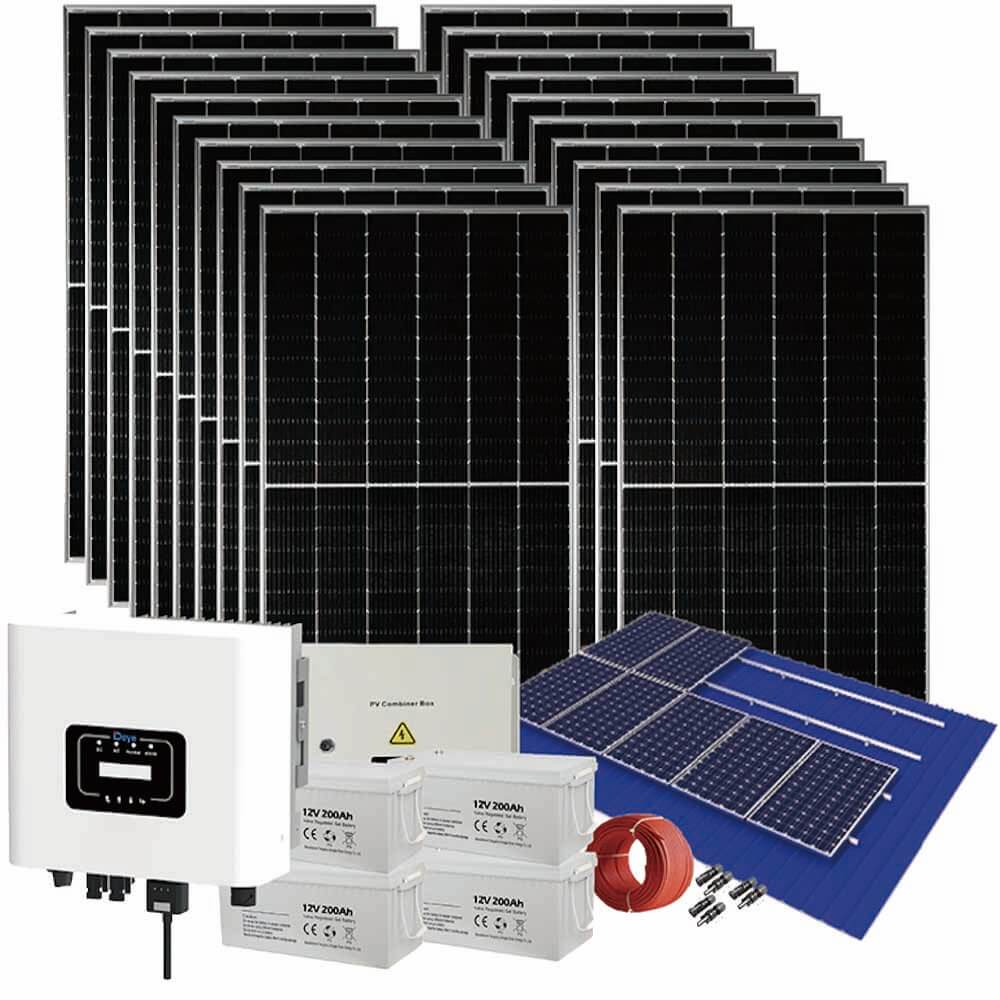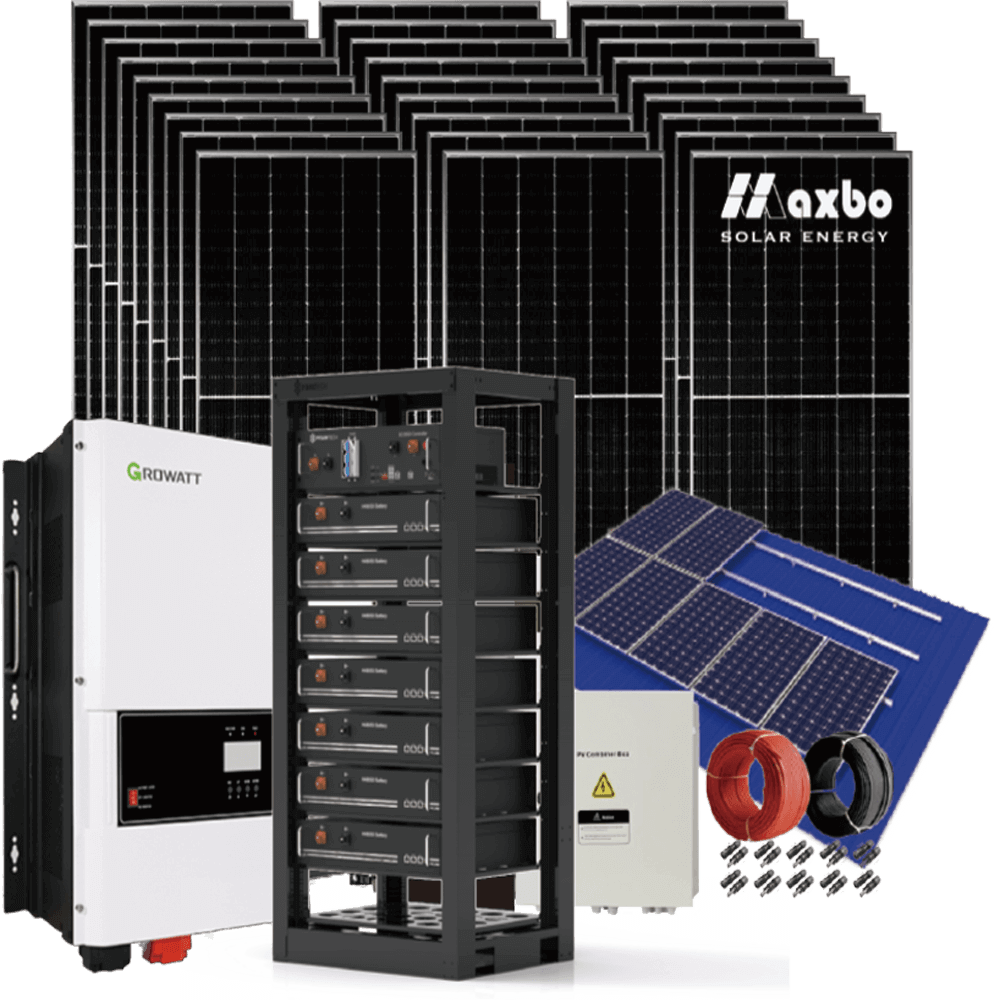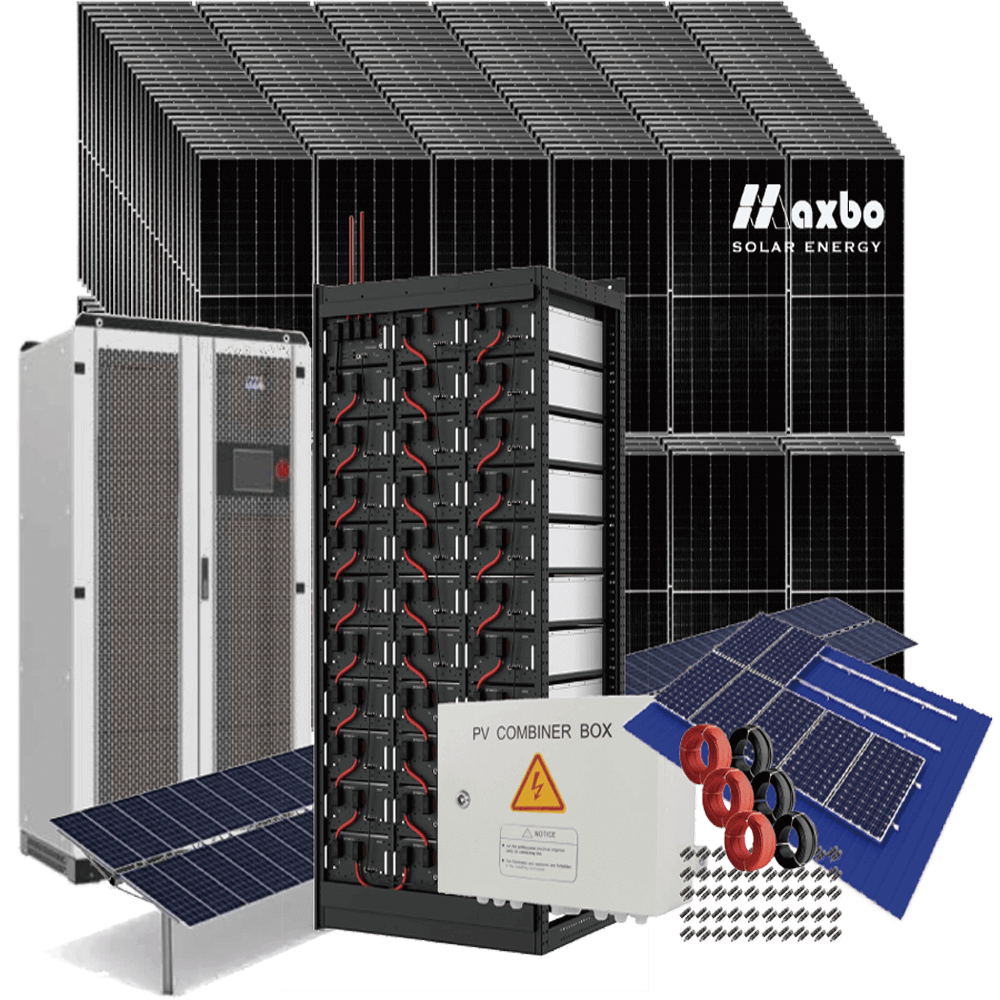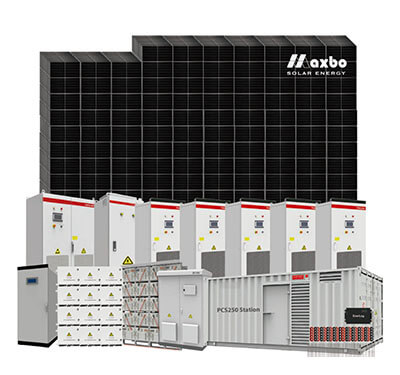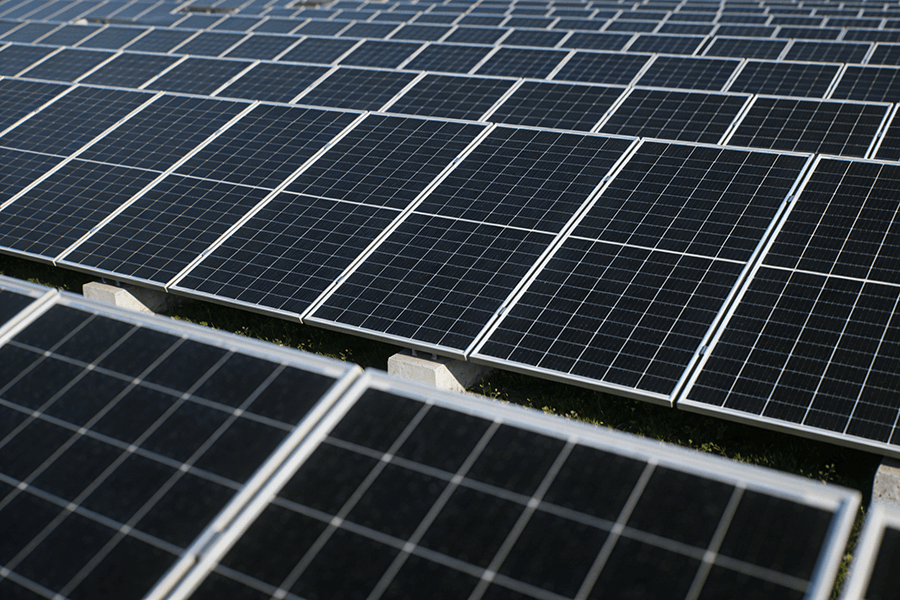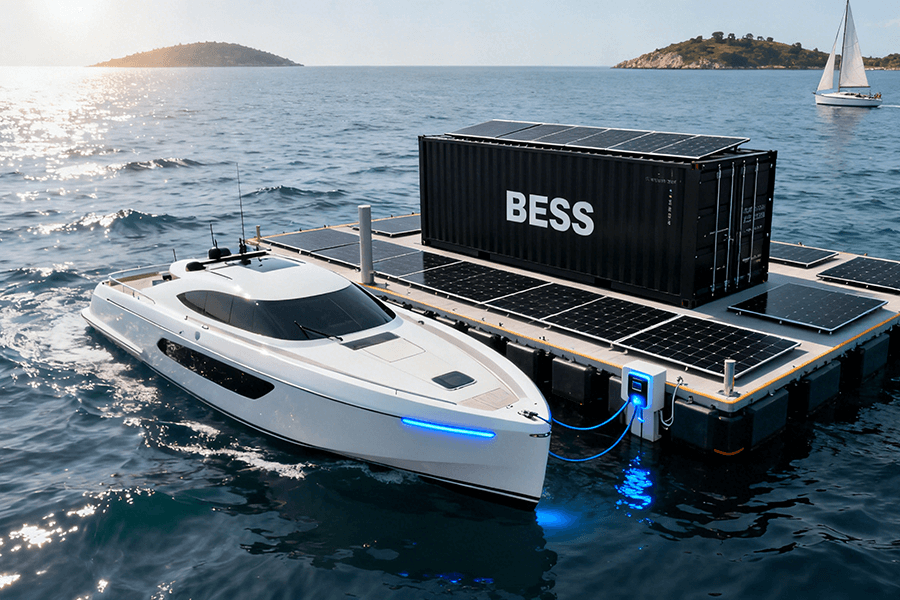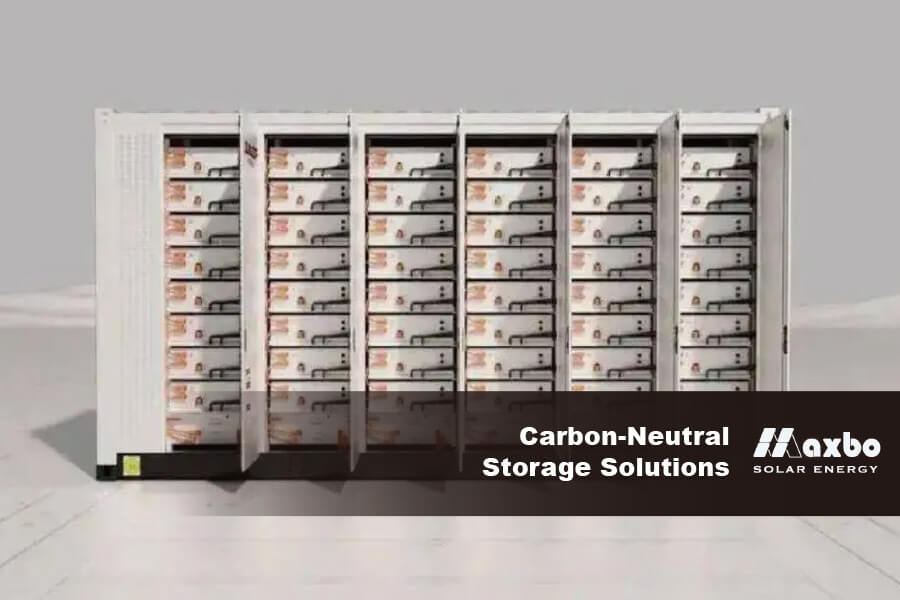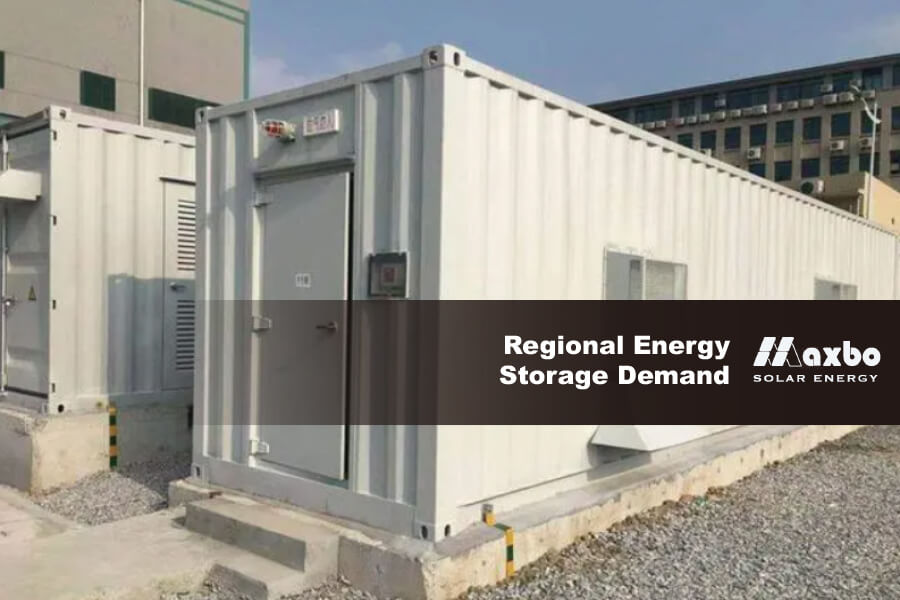In the ever-evolving world of solar energy, the solar inverter for whole home system plays a critical role in ensuring the success and efficiency of your solar energy setup. As more European homeowners embrace solar power as a sustainable and cost-effective energy source, understanding the different types of solar inverters and their functionality is essential. At Maxbo, we provide factory-direct, turnkey solar solutions, including high-quality inverters tailored to your specific needs. In this guide, we’ll walk you through the key aspects of the solar inverter for whole home system, focusing on types, costs, and how they work to make your solar energy system run smoothly.
Table of Contents
ToggleWhat Is a Solar Inverter and Why Is It Important?
In any solar inverter for whole home system, solar panels generate direct current (DC) electricity from sunlight. However, homes and the electrical grid run on alternating current (AC) electricity. This is where the solar inverter comes in. The inverter converts the DC electricity produced by your solar panels into AC electricity, making it usable for your household appliances and allowing you to send excess energy back to the grid if your system is grid-tied.
Without a functioning solar inverter for whole home system, the electricity generated by your solar panels would be unusable. This makes the inverter a key component that directly influences the system’s efficiency and reliability.
Types of Solar Inverters for Whole Home Systems
When selecting a solar inverter for whole home system, there are several types to choose from, each with different characteristics and cost implications. Here are the most commonly used types of solar inverters:
1. String Inverters
String inverters are the most widely used type of inverter in residential solar systems. In a solar inverter for whole home system using string inverters, several solar panels are connected in a “string,” and the power generated by these panels is sent to a central inverter that converts the DC power into AC.
- Advantages: String inverters are cost-effective and straightforward to install. They work well for homes where the solar panels receive consistent sunlight without much shading.
- Disadvantages: If one panel in the string is shaded or underperforms, the performance of the entire system is affected. This makes string inverters less ideal for homes with roofs that experience varying sunlight exposure throughout the day.
- Cost: String inverters are typically priced between €500 and €1,500, making them the most affordable solar inverter for whole home system option.
2. Microinverters
Microinverters are a more advanced option, as they are installed on each solar panel individually. Each microinverter converts the DC electricity from its panel into AC at the panel level, which is then fed directly into your home’s electrical system.
- Advantages: Microinverters allow each panel to operate independently, which is particularly beneficial for homes with shading issues or roof angles that create inconsistent sunlight exposure. This results in higher efficiency and optimized power generation.
- Disadvantages: Microinverters are more expensive and require more installation time compared to string inverters.
- Cost: A system using microinverters generally costs between €1,000 and €2,000, depending on the number of panels and the complexity of the solar inverter for whole home system installation.
3. Power Optimizers with String Inverters
Power optimizers are a hybrid solution that combines the benefits of both string inverters and microinverters. Each solar panel is fitted with a power optimizer, which optimizes the voltage from the panel before sending it to a central string inverter for DC-to-AC conversion.
- Advantages: Power optimizers mitigate the impact of shading or underperforming panels by allowing each panel to work independently, similar to microinverters. However, this solution is usually more affordable than installing microinverters for each panel.
- Disadvantages: Like microinverters, power optimizers add complexity to the system, and while they improve efficiency, the central inverter remains a single point of failure in the solar inverter for whole home system.
- Cost: A system with power optimizers and a string inverter typically costs between €800 and €1,800, depending on the size and configuration.
How Solar Inverters Work in a Whole Home System
In any solar inverter for whole home system, the solar inverter’s primary function is to convert DC power from the solar panels into AC power that can be used in your home. Here’s a simple breakdown of how it works:
- DC Power Generation: Solar panels convert sunlight into DC electricity.
- Inverter Conversion: The inverter (whether a string inverter, microinverter, or optimizer/inverter setup) converts the DC electricity into AC electricity.
- Power Distribution: The converted AC electricity is used to power your home’s appliances or is sent back to the grid if you’re generating more energy than you need.
Efficiency of Solar Inverters
Inverter efficiency plays a key role in how much energy your solar inverter for whole home system delivers to your home. Modern inverters typically have efficiency ratings between 95% and 99%, meaning that very little energy is lost during the conversion process. However, factors such as shading, temperature, and inverter technology can affect overall performance.
Costs of Solar Inverters for Whole Home Systems
The cost of your solar inverter for whole home system will depend on the type of inverter you choose and the size of your system. Here’s a breakdown of typical inverter costs:
- String Inverters: Between €500 and €1,500, depending on the system size. String inverters are the most budget-friendly option and are suitable for homes with consistent sunlight exposure.
- Microinverters: These typically cost between €1,000 and €2,000. Microinverters are more expensive due to their higher efficiency and the need for one inverter per solar panel.
- Power Optimizers with String Inverters: A hybrid solution that usually costs between €800 and €1,800. Power optimizers offer improved efficiency at a lower price point than microinverters.
In addition to the inverter cost, it’s important to consider installation fees, which can vary depending on your location and system complexity. Typically, inverter installation is included in the overall installation cost of a solar inverter for whole home system, which can range from €1,000 to €5,000.
Choosing the Right Solar Inverter for Your Whole Home System
Selecting the best solar inverter for whole home system involves evaluating several factors, including the size of your home, the amount of sunlight your panels will receive, and your budget. Here are a few key considerations:
- Roof Shading: If parts of your roof experience shading during the day, microinverters or power optimizers are likely the best option. These technologies allow each panel to operate independently, minimizing the impact of shading on overall system performance.
- System Size: For larger systems, string inverters may be more cost-effective, as the cost of microinverters can add up with larger panel arrays. Smaller systems, on the other hand, may benefit from the increased efficiency of microinverters.
- Budget: String inverters offer the most cost-effective option, but if efficiency and performance in partial sunlight are critical, investing in microinverters or power optimizers might be worth the additional cost.
At Maxbo, we help our customers determine the best solar inverter for whole home system based on their specific needs, whether they’re looking for an affordable string inverter setup or a high-efficiency microinverter system. Our team provides expert consultation to ensure your system operates efficiently and delivers maximum energy savings.
Maxbo’s Solar Inverter Recommendations for European Homeowners
European homeowners face unique challenges when it comes to solar energy, such as variable weather conditions and diverse sunlight patterns. At Maxbo, we offer a range of inverter options designed to meet the needs of European customers, ensuring optimal performance under all conditions.
Whether you live in northern Europe with less consistent sunlight or in the sunnier southern regions, Maxbo has the right solar inverter for whole home system for you. Our inverter solutions are designed to maximize efficiency, reduce energy losses, and provide long-lasting performance.
Explore our range of high-quality solar inverters and complete solar solutions at Maxbo Solar. For further insights into the latest solar energy technologies and inverter trends, you can also check out SolarPower Europe, a leading association dedicated to advancing solar energy solutions across Europe.
Conclusion: Maximize Your Solar System’s Performance with the Right Inverter
A solar inverter for whole home system is an essential component that ensures your solar energy system operates efficiently and effectively. By choosing the right type of inverter—whether a string inverter, microinverter, or power optimizer setup—you can optimize your system’s performance and maximize your energy savings.
At Maxbo, we offer a variety of inverter solutions tailored to European homeowners. Whether you’re looking for an affordable, reliable option or a high-efficiency system for challenging conditions, we’re here to help you find the perfect solution.
Ready to upgrade your solar system? Visit Maxbo Solar to learn more about our solar inverter for whole home system and discover how we can help you harness the power of the sun for your whole home.
Related Solutions
Related Blogs
Grid-Forming BESS Container Europe: Crushing NC RfG 2.0 & Keeping Europe’s Lights (and Espresso Machines) On
行政2025-12-19T14:07:50+08:00December 18th, 2025|Categories: Design, News|
Electric Vessel Charging BESS Container Europe: The Grid-Saving Hero Powering Zero-Emission Maritime
行政2025-12-19T14:09:32+08:00December 18th, 2025|Categories: Design, News|
Let’s Make Things Happen
Add notice about your Privacy Policy here.
Let’s Make Things Happen
”The Maxbo team of sales consultants will continue to enrich our own expertise and experience to empower the development of sustainable energy with rigor.“
Maxbo CEO
You will need to provide: 1. the amount of electricity used. 2. the type and power of the load. 3. the electricity consumption habits (daytime/nighttime consumption). 4. the need to store electricity. 5. the need to feed electricity to the mains. 6. drawings or address of the installation site. 7. other special requirements
We can provide you with a quotation, a specification for all products, a circuit connection diagram and a diagram of the installation and placement of the PV panels. Any other requirements and adjustments needed can be discussed with our team.
We can meet the needs of most scenarios, whether your application is for domestic, commercial and industrial use, in remote areas, or for grid-level energy storage, we have experienced colleagues to design and deliver the right solution.
Add notice about your Privacy Policy here.
How much solar power do I need?
Most homes need 5–12kW, depending on your energy use and location.
Off-grid vs. grid-tied — what’s the difference?
Off-grid works without the utility grid; grid-tied lets you sell extra power back.
Do I need permits?
Usually yes — check local rules or ask us for guidance.
How long does a battery last?
Depends on size and load. A 5kWh battery can power a fridge for about 40 hours.
Can I upgrade my system later?
Yes, our systems are modular and easy to expand.
Does Maxbo offer installation?
We ship globally and connect customers with trusted local installers.
